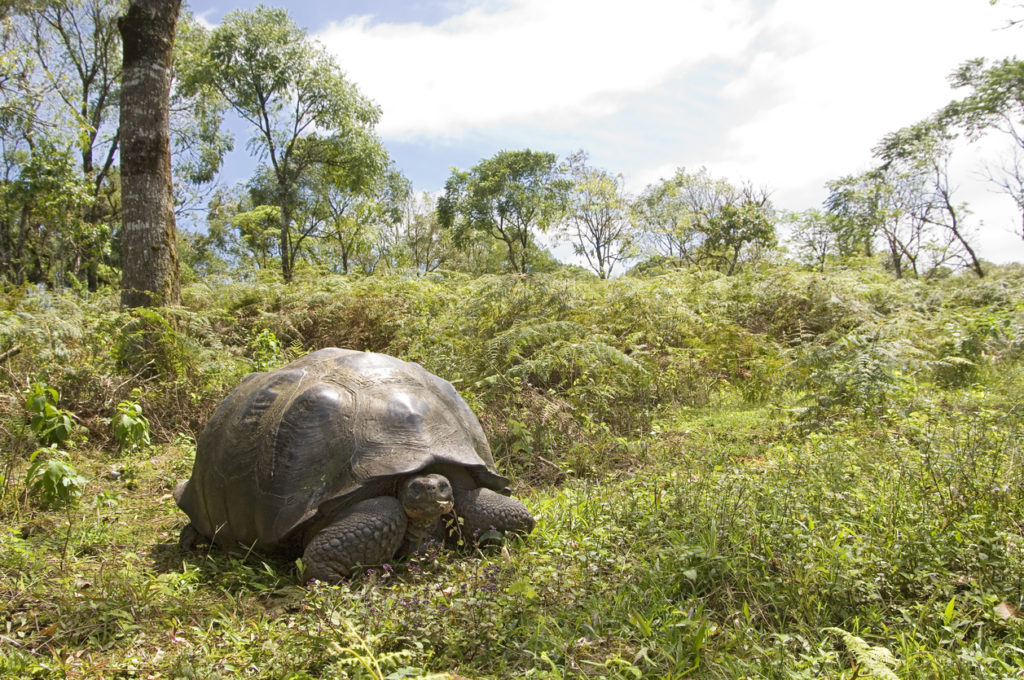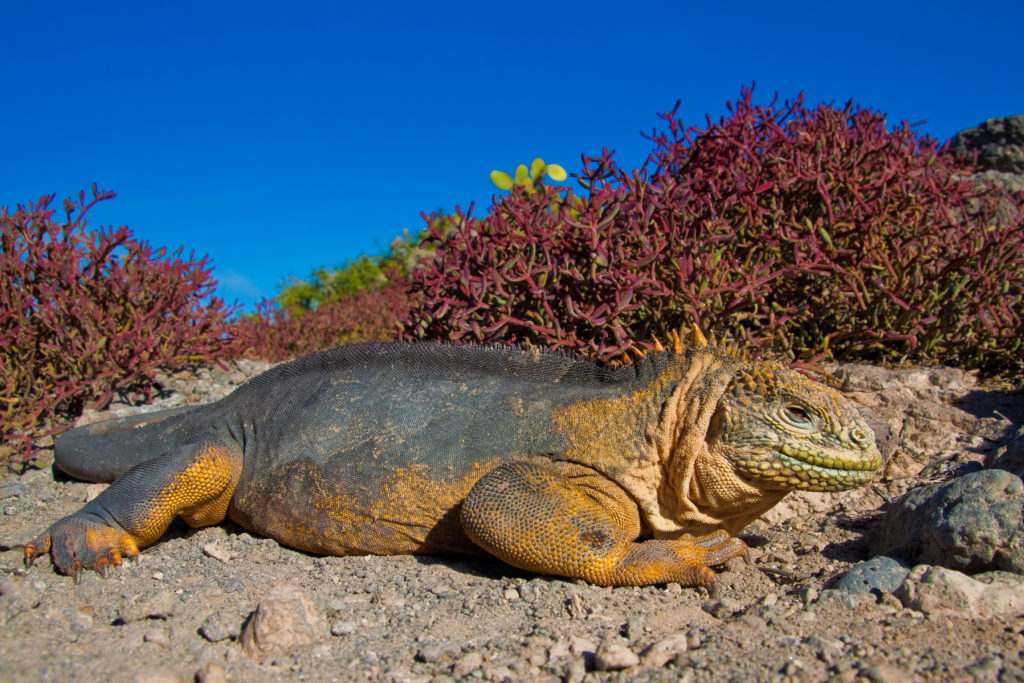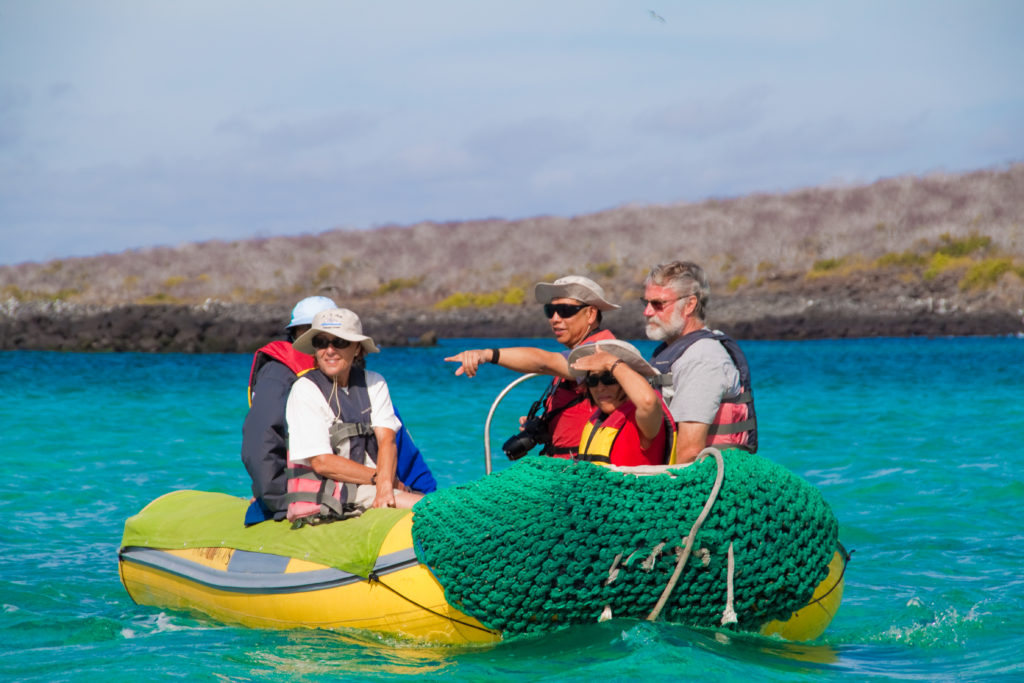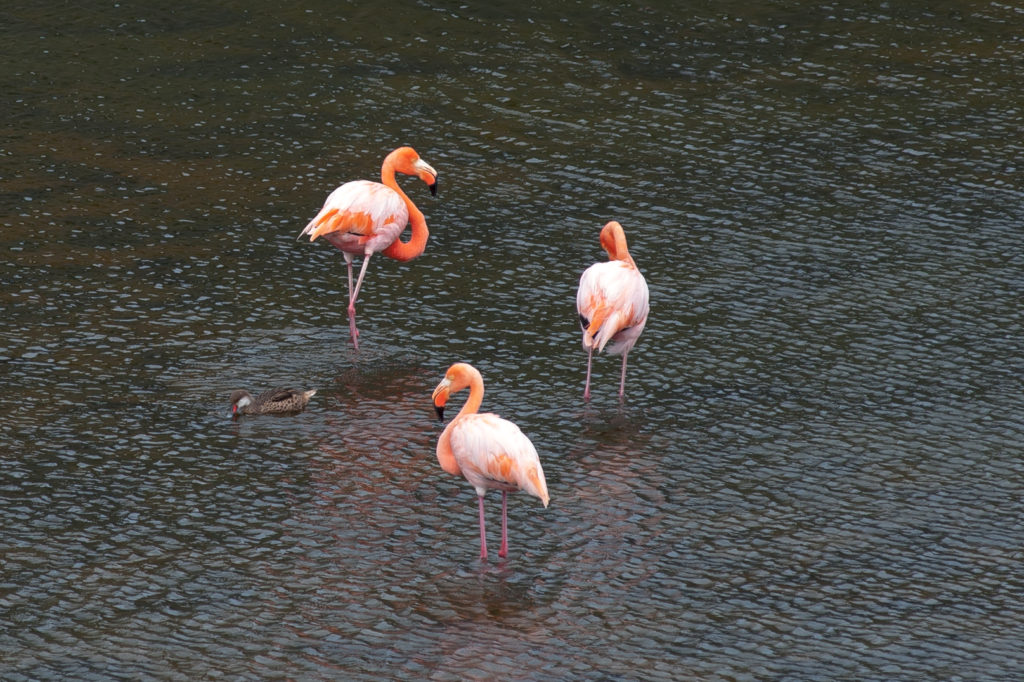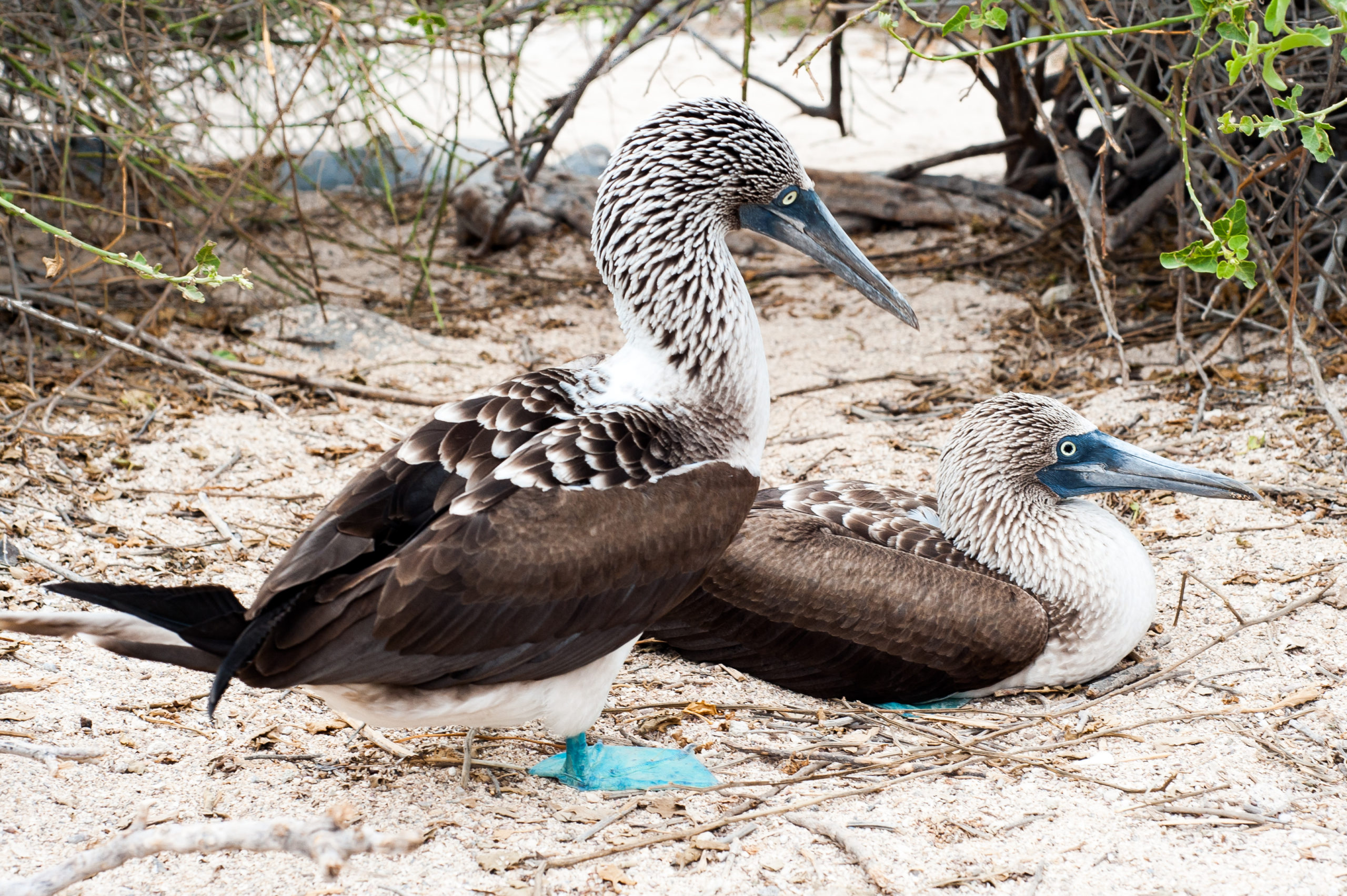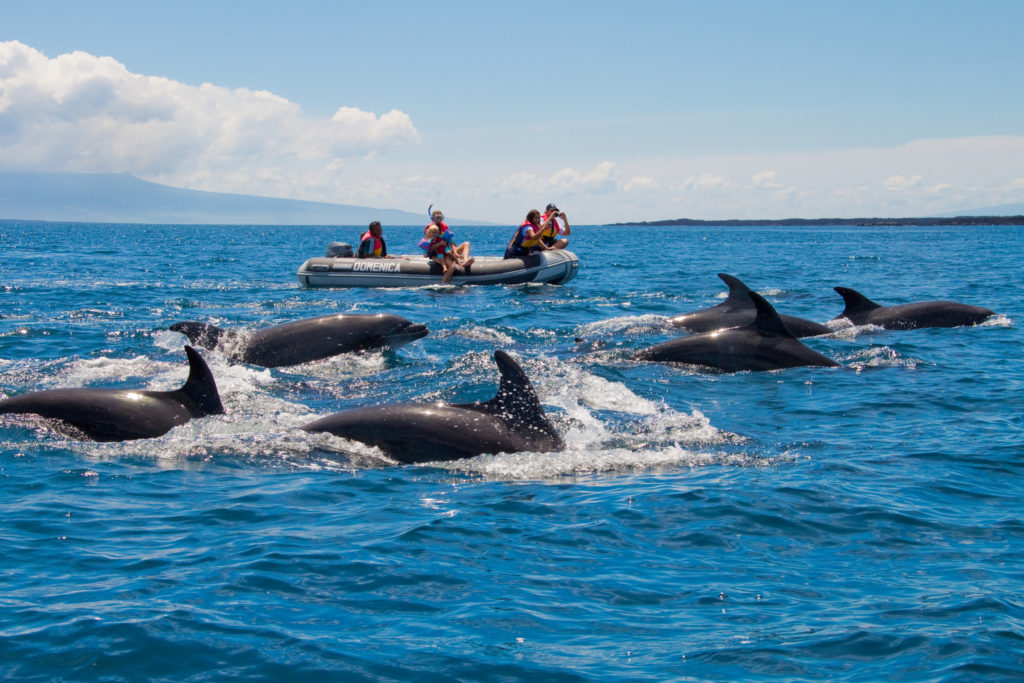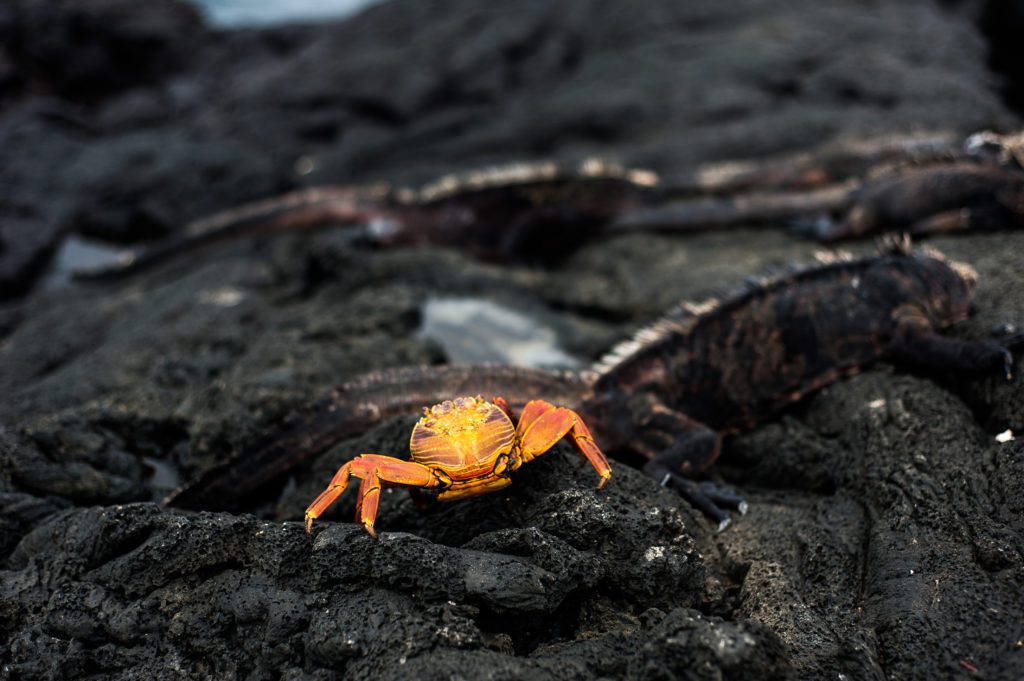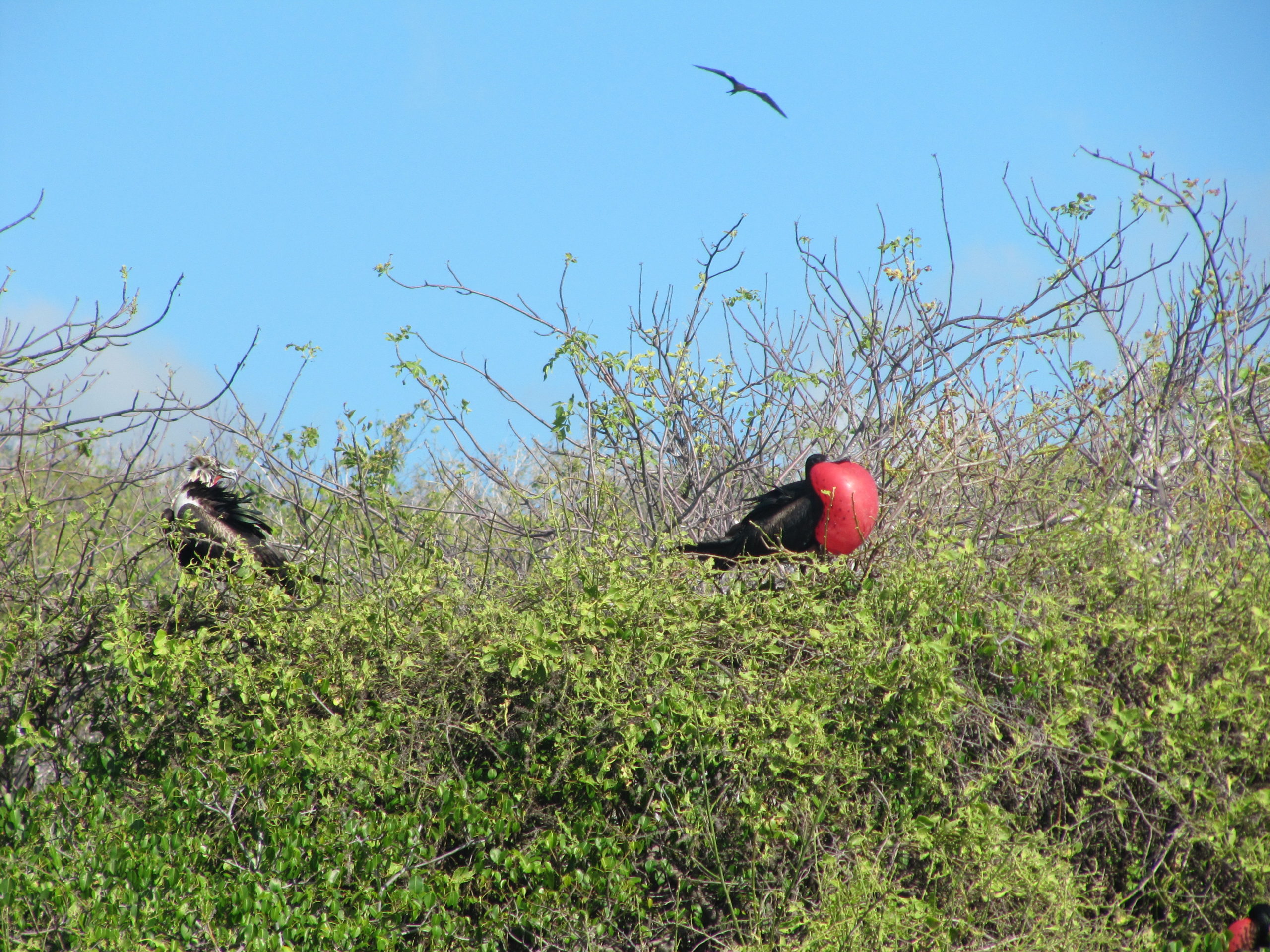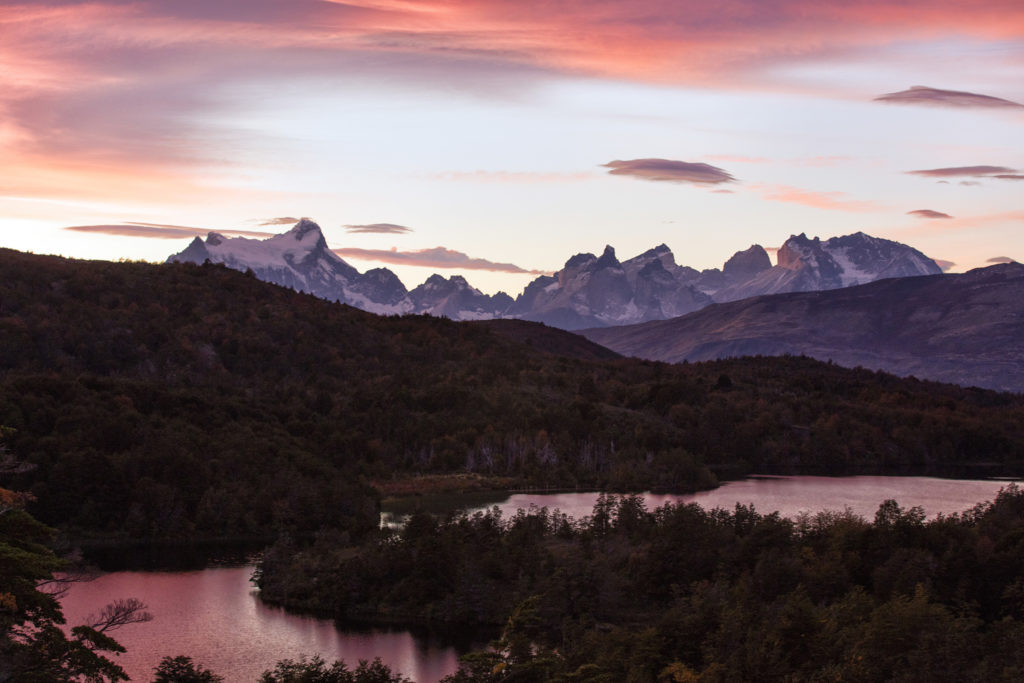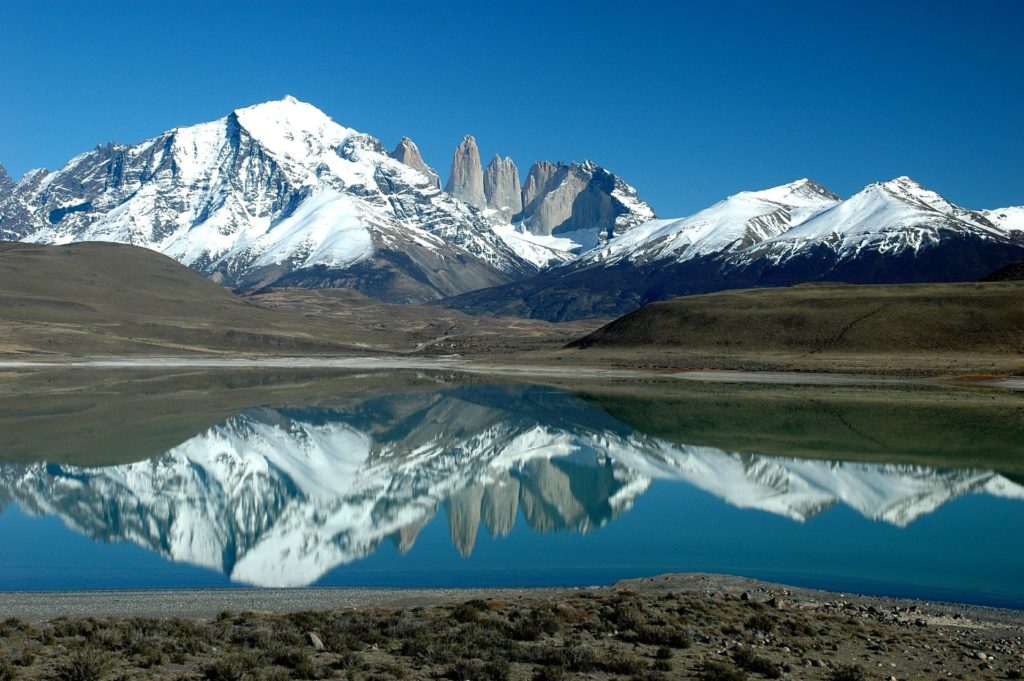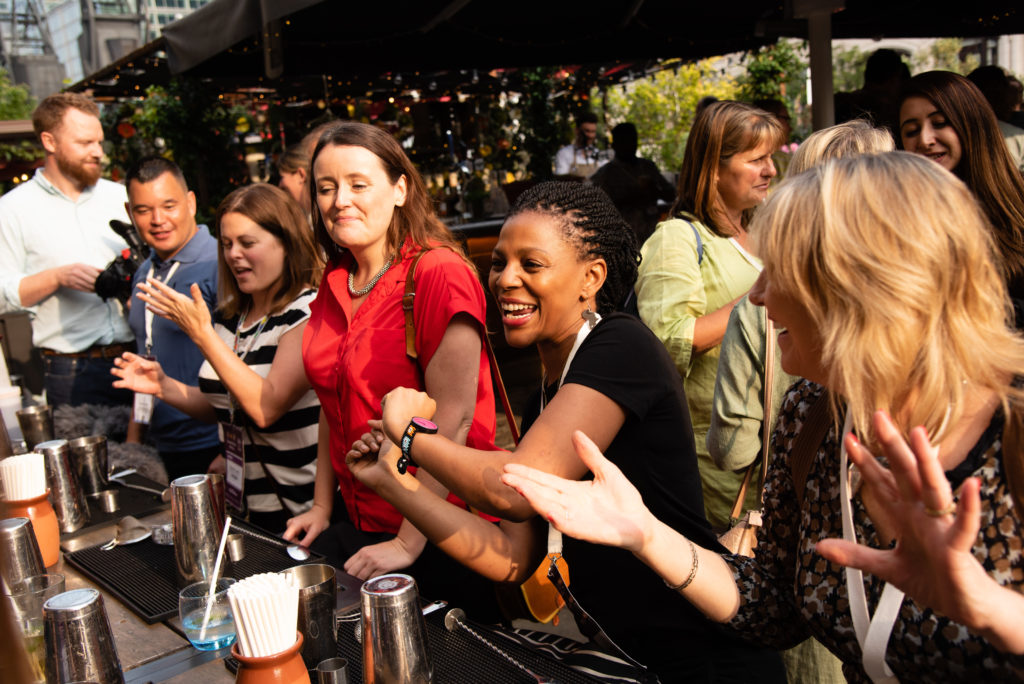Experience
Diary of a Galapagos cruise
The Galapagos Islands are a destination that feature on the bucket-list of many a traveller, but the unique nature of the archipelago can make it difficult to picture how a trip here might fit together, and what an ‘average’ day on a Galapagos cruise is like. I was fortunate enough to return to the Galapagos recently leading a small group fam trip on Sea Star Journey, and put together the below diary of our adventures…
Day 1 – Andes to Pacific
Whenever I visit South America it always astonishes me how a short flight can take you somewhere so dramatically different! The flight from Quito to the Galapagos Islands is no exception. Less than two hours in the air and landscapes and climate change beyond recognition – the heady heights of Ecuador’s Andean capital city give way to the tropical heat of these remote Pacific Islands, located some 800 miles off the shore of mainland South America. We arrive in Santa Cruz, the most populous of the archipelago’s four inhabited islands, where we met for the transfer south from Baltra airport to begin our immersion into the wildlife of the Galapagos straight away!
Our first activity is a guided tour around the Charles Darwin Research Station. Here you can learn more about the foundation’s vital conservation work, visit the breeding centre to see countless Galapagos tortoises in various stages of their development, as well as getting your first glimpse of the enormous yellow land iguanas. A leisurely stroll takes us back into Puerto Ayora town where there is ample free time to browse the shops and enjoy an ice cream on the main promenade before boarding our home for the next 5 nights, the Galapagos Sea Star Journey. With just 8 suites this is one of the more intimate vessels sailing the archipelago, and welcome cocktails on board ensure we are soon very already acquainted with our cruising companions for the coming days. After some down time to settle in to our cabins we regroup for our welcome briefing and the first of many delicious three-course dinners to end the day!
Day 2 – we are sailing
I first visited the Galapagos Islands five years ago but had completely forgotten that feeling of sheer excitement I experienced waking up to the sound of the dropping anchor in the morning! The majority of longer sailing on all Galapagos cruises takes place overnight and – despite being quite the opposite of a morning person at home – every morning here the anchor sound prompts me to jump out of bed and peer out of the window to see where we have reached next. Our sailing this first night has taken us to the largest island of the archipelago, Isabela. She is also one of the youngest of the Galapagos Islands, formed by the joining of six volcanoes into that distinctive seahorse shape, easily recognisable when looking at any maps of the archipelago. Five of these volcanoes are still active, one of the most recent eruptions quite a spectacular one back in June 2018 where passing cruise passengers were treated the spectacle of red-hot lava channels running in to the sea. Our excursions on Isabela today are not as seismically dramatic, but certainly impressive for wildlife and volcanic scenery! Our first port of call is Tintoreras, where a sea lion observes our arrival with apparent indifference….
A walk through an eerie landscape of craggy lava takes us to the crystal channel known as the White Tipped Reef Shark Canal which runs right next to the walking trail. Alas not many sharks around this morning for us to see but marine iguanas aplenty – we are having to step over clumps of them lounging on the path and gathering on the edges of the channel to take their morning sun.
We eventually return to the yacht for lunch and a siesta on deck before setting back out towards Puerto Villamil, Isabela’s main town which has an even more laid-back feel than Puerto Ayora. Before our dinghy has even docked we are treated to a real wildlife spectacle; an enormous group of blue-footed boobies soaring over our heads and then diving into the water at enormous speed to catch fish. Our guide explains that they can reach speeds of up to 30 miles an hour as they narrow their bodies into an arrow shape and plummet into the ocean. It is such a treat to be quite literally in the middle of this natural phenomenon, which carries on for some time – big appetites here today!
We eventually tear ourselves away and board the minibus for what should have been our next excursion, hiking the Sierra Negra Volcano. Unfortunately as we get closer to the start of the trail a National Park official informs us that the rest of road is closed for the coming days due to essential maintenance works, so no-one is able to visit. Road works can change plans, even in the Galapagos! And though there is some disappointment, it is a generally accepted fact that activities here are always subject to change due to conditions (which is why a flexible attitude is essential on your packing list), and that any restrictions put in place by park authorities are always for good reason. However we once again also appreciate the enormous wealth of experience of our guide Hansel (who has worked in the Galapagos for over 30 years). On the way back to town he requests the driver stop at a place seemingly in the middle of nowhere, surrounded by forest. He has a surprise for us ! Cave-like underground lava tubes, easily large enough for us to all pile in and admire the depths of this curious geological phenomenon.
Energised by this unexpected detour we return to Puerto Villamil to visit the tortoise breeding centre – passing by a picturesque lagoon with flamingos en-route – before ending the afternoon with a bit of beach time, some of us swimming in the sea, others setting up camp in the beachfront bar to enjoy some potent Coco Loco cocktails and take advantage of some unexpected WiFi access!
Day 3 – surprises around every corner
Another unexpected treat this morning – breakfast on deck! The omelette station is not sacrificed for this endeavour though – our made-to-order eggs are simply brought to us outside. This is a tough life….
Overnight we have sailed north along Isabela’s western coast and are almost halfway up the ‘seahorse’ where we drop anchor near Punta Moreno. Here our morning activity is a scenic zodiac ride past black lava protrusions where marine iguanas bask in the sun and we also get our first glimpse of Galapagos penguins. We then disembark to hike over ‘pahoehoe’ lava flow – which looks like an enormous vat of molasses has been emptied as far as the eye can see – and stop to marvel at craters filled with grass or water.
Our afternoon excursion brings some wildlife treats that truly delight me. We take a relaxing panga ride towards the Marielas islets where we get the closest sightings yet of blue-footed boobies. They are not shy at all and seem happy to pose for photos. We pass more penguins before reaching an area of lush mangroves where huge sea turtles bob around and under the dinghy. It is here that we witness something truly unexpected – the sight of a sealion lounging on a branch above the water enjoying an afternoon snooze. I have truly seen it all now!
Tonight the crew of the Sea Star continue in their efforts to spoil us rotten, serving up a BBQ dinner for us on the deck. After polishing off freshly barbecued beef and fish with delicious salsa, we linger as it gets darker watching a pelican following the boat for a while, diving down sporadically whenever he glimpses a fish. He is applauded by the remaining few diners whenever he catches one.
Day 4 – snorkelling, kayaking (and more iguanas!)
Our previous night’s sailing has taken us to Fernandina Island, to the west of Isabela. Despite being the third largest of the archipelago, there is only one landing site here open to visitors. At Punta Espinoza we take a gentle stroll along sandy beaches intersected with expanses of lava, on top of which sea lions are doze in the sunshine and lava cactus sprout in clusters from in between the lava layers. Also on the lava – more iguanas. You certainly see a lot of marine iguanas on a trip to the Galapagos, but their antics make them my favourite creature to spot, so for me the novelty wears off. I just love watching them squirt salt water out of their nostrils after a lengthy swim, seeing the adult males squaring up to each other in aggressive battle of nodding heads and stepping over the ones that have completely flattened themselves on the path (the heat of the ground helps the algae digest in their bellies, Hansel explains).
After refreshments and snacks back on board we don our wetsuits for some thoroughly enjoying snorkelling, straight from the zodiacs. Within minutes we have spotted a huge sea turtle, who drifts along in a very accommodating manner while we all get a chance to watch him. We gradually divide into smaller groups with plenty of tales to tell when we eventually return to the zodiacs; Phil in our group received a fairly sharp peck on the leg from a diving cormorant (we couldn’t tell if it was affectionate or not!)
A soak in one of the Sea Star Journey’s two hot tubs has become a welcome tradition after snorkelling – and the sight of a frigate bird or two gliding along above the sun deck has become a regular sight when the ship is moving!
After lunch and the (by now obligatory) siesta, we have returned to Isabela – Tagus Cove this time – where the more active amongst us get their fix of exertion. There is kayaking along the edge of the cove, followed by a challenging but rewarding hike up the cliff to look back over spectacular views of Darwin Lake. After dinner this evening we decide to head back up to the sun deck and lounge for a while because the night sky seems so impossibly full of stars, as far as the eye can see. I have never seen anything like it, and it is certainly a travel memory that will stay with me forever.
Day 5 – fur seals, a final swim with sea lions and dolphin watching at sunset
This morning we have reached Santiago Island, one-time popular pit stop for passing buccaneers. We snorkel for some time in James Bay, spotting countless sea turtles and the occasional sea lion. Our afternoon visit is to Puerto Egas, where within minutes of hopping off the panga we see fur seals! Fur seals are not seen nearly as often as sea lions in the Galapagos, generally favouring shady ledges in the western isles and only hunting at night. Seeing so many of them here (and pups too) is therefore a real treat, and even Hansel takes a break to sit and watch them for a while. We continue along a scenic trail where bright red Sally Lightfoot crabs dazzle against the black lava rocks, and a lava lizard patiently poses for my photograph.
We complete the trail at – for me – one of the most enjoyable beaches of the entire cruise. Against the layers of sedimented rock sealions sleep in made-to-measure shelves, whilst their more active companions come and join us for a refreshing swim. Back on board we take one final soak in the hot tub. Due to the longer journey tonight we set sail a little earlier, but we take advantage to watch the sun set from the deck and spot dolphins performing acrobatics in the distance. This seems like the perfect finish for our final night on board.
Day 6 – frigate birds & farewells
A temporary distraction from the sadness of having to travel home today is our final excursion, to Isla Lobos on San Cristóbal island. Isla Lobos gets its name from the large colony of sea lions to be seen here – and they certainly seem to be almost everywhere you look! One final treat for me was getting to see nesting great frigate birds, which includes gangly chicks and a male inflating its distinctive red pouch. They do this to attract females during breeding season, and this was a spectacle that always seemed to elude me on my last visit. It therefore seemed quite fitting to end the trip with an unexpected wildlife treat – on a trip that offered these by the bucket-load.
Galapagos fact file
When to go: the weather in Galapagos can be loosely divided into two seasons; the summer months from December to June are warmer and wetter, but in reality heavy rains are rare. You will perhaps experience the odd short tropical shower, but land and sea temperatures are warmer at this time. Between June and November humidity is lower with winds increasing (peaking in August & September where the sea is at its coolest and choppiest). Visibility for snorkelling can be better during this time as there are fewer rain showers.
Unless there is a particular species of bird you wish to see you will enjoy the spectacular wildlife of the Galapagos whichever month you choose to visit.
Cruise options: we sailed on the Sea Star Journey’s 6-day / 5-night Itinerary C. The yacht offers another 5-night cruise as well as a 4-night option for those who would prefer less time at sea (or combinations of the above are possible to create longer itineraries). The Sea Star Journey is an all-suite yacht with a dedicated cruise director on board, 2 Jacuzzis on its expansive sun deck and capacity for just 16 passengers, offering an intimate and stylish experience of the Galapagos. Also in the Journey fleet, the Galapagos Seaman Journey is a mid-range catamaran offering an equally intimate experience with just 8 cabins, and itinerary options ranging from 3 to 7 nights.
Share this article

Our Services
Below you will find outlines of just some of the services we can offer. Whether it is a one-off promotional campaign, longer term representation and marketing project, on-site operational support for an existing event or the conceptualisation and delivery of a brand new event, we have the experience and expertise to guide you through your project.
